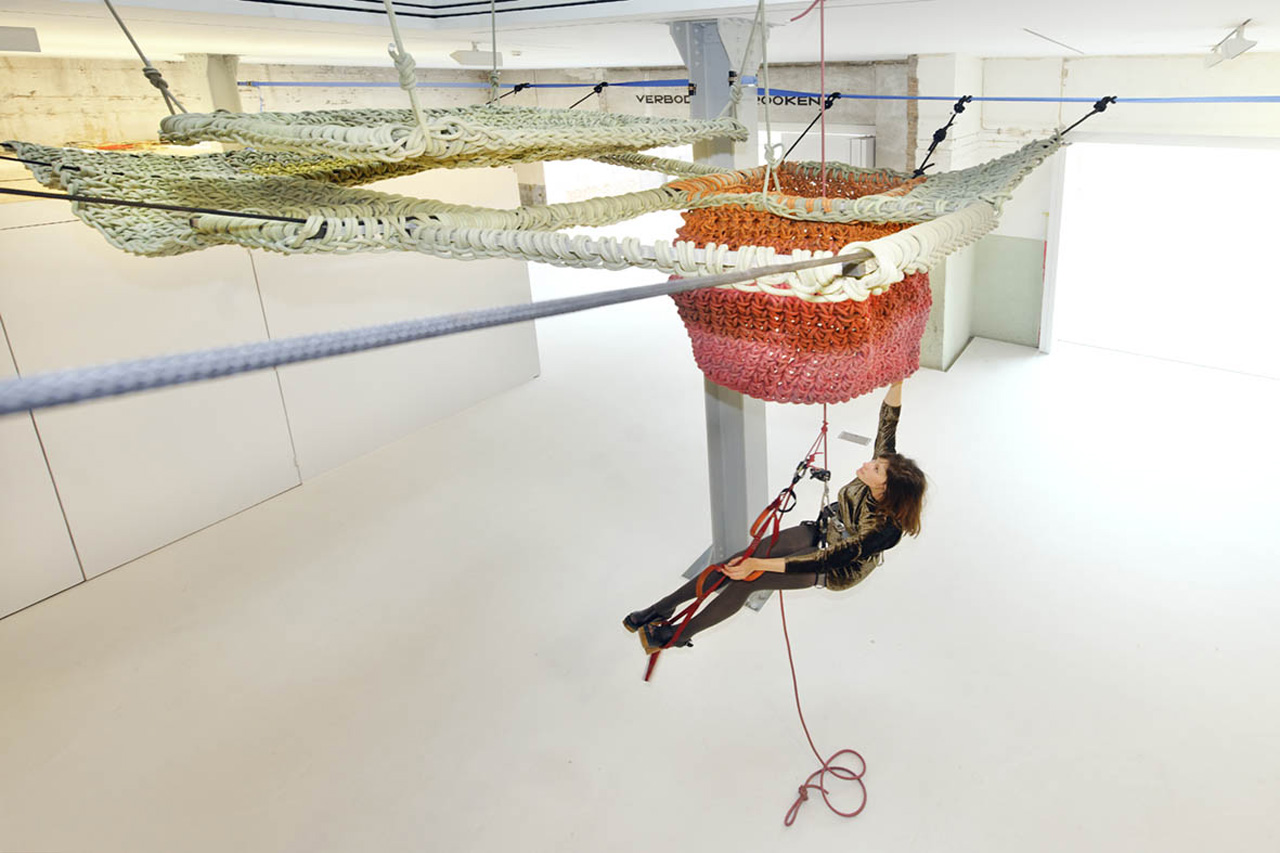Inspired by Vacancy

During the Venice Architecture Biennale in 2010, Amsterdam-based design studio Rietveld Landscape successfully showed the world that thousands of inspiring public buildings in the Netherlands lay vacant. Many of these buildings have great potential, but focusing on re-development would be a long and difficult process. The real chances are in extreme temporary use, but the legal circumstances in the Netherlands are not fit for temporary use of buildings. After the Vacant NL exhibition, Rietveld Landscape continued their research on vacancy with a two-year long master program called Studio Vacant NL, that was organized in collaboration with the Sandberg Institute. Last month the program came to an end with a graduation exhibition in Amsterdam, which featured projects by seven master students.

The idea behind the master is simple, according to Erik Rietveld, co-founder of Rietveld Landscape: “Vacancy is not a problem, but a giant opportunity.” During the program the students got the chance to experiment with innovative concepts for vacant buildings in real practice. The current debate on empty spaces is terribly boring, says Ronald Rietveld, the other half of the agency, in an interview in Volume’s 33th issue. “It’s limited to the reductive jargon of architects to simply ‘fill up’ the program in square meters. But tens of thousands of public buildings are involved; mostly inspiring cultural heritage.” The master focuses on this inspiration and on the special conditions of these buildings.

Jorien Kemerink, one of the program’s students, presented her work Skinned, a collection of casts of special places in old vacant buildings. Building upon the philosophy of the liquid city, the latex skins that she Kemerink has produced take the atmosphere and style from a building and make it into a fragile foldable piece of art to be taken to any location. Architect Pieter Alexander Lefebvre uses container bags (bags that protect the cargo inside a shipping container) and tailors them to temporary spaces within a vacant space. His soft, white spaces create clean and temporary indoor dividing walls in a building which are able to create the optimal conditions for various crafts,such as a hairdressing salon. Ridges form the most exclusive peaces of vacancy, according to artist Celine de Waal Malefijt. Using ropes she creates access to these unlocked and often very light spaces. The material creates an invisible floor that provides a view on vacancy from a penthouse perspective — an oasis of rest and peace.

All the works featured in the exhibition react on vacant space in an artistic way. They don’t try to come op with the most practical solution for a problem, but take the great condition that vacancy is as an inspiring framework, or starting point. In that sense the exhibit does something new — the artistic view on vacancy opens up new perspectives. The works are interesting to see, feel and experience, shed another light on vacancy and bring forward the extreme conditions that vacant spaces have. Some are dirty, others are very light, some are cold, and others have very heavy concrete walls. These conditions should not be seen as problems for ‘normal’ re-use of the buildings. Instead, they create a inspiring context for extreme creative use and a frontier of new architectural practice.

Click here for more information regarding the master’s program and the exhibition.